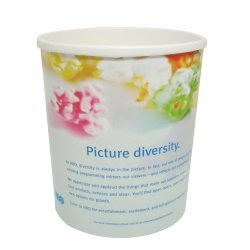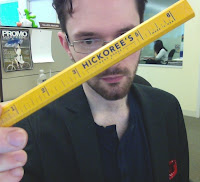WHEN IT COMES to the advancement of the species, mankind seems to have its finger on the fast-
forward button. On a fairly regular basis, giant leaps are made in varying fields from technology to medicine. But for every move toward the next new-and-shiny improvement coming off the assembly line of progress, there is a quieter, and equally meaningful, reaction. No doubt, we like our cutting-edge toys, yet people still take comfort in and certainly continue to utilize items that are,
supposedly, outmoded.
Take car collectors. For every top-of-the-line Ferrari in the garage, there’s a recently rebuilt
classic car waiting for its turn around the block. In the fashion world, vintage designer handbags go for quite a pretty penny. It was the universal refrain in the industry, “when the computer age came, paper and pens would be gone,” remarked Larry Sitten, executive vice president of Westbury, New York-based Pencoa. Yet, writing instruments continue to hold court as some of the most commonly used promotional items in the business. With upgrades, viruses and glitches just waiting to render end-users incommunicado, there’s a lot to be said for simple consistency.
TEACH AN OLD ITEM NEW TRICKS
However, there’s consistency, and then there’s complacency. Even for the most tried-and-true products, distributors and suppliers must always keep an eye toward the future. Here are a few off-the-beaten-path ideas that are working to bring writing instruments, as a category, into the new year and beyond.
1) Capitalize on eco-conscious items. If there’s one way to get distributors to take a second look at an industry staple, it’s to come up with a green
version. These days, the “eco-friendly” designation is an extremely effective selling point, and to capture the growing sense of awareness, Sitten’s company has added a few biodegradable pens to its roster. As opposed to being crafted from petroleum-based
plastic, Pencoa’s EnviroPen is made of vegetable polymer. It is 81.9 percent biocompostable. Alternatively, “We have another pen that’s got a cardboard barrel and a wooden clip … it is probably about 50 to 60 percent degradable,” he maintained. Similarly, Quick Point and BIC Graphic USA are among the other suppliers jumping on this bandwagon.
2) Look for better packaging. It could be because a finely crafted pen harkens back to a time when elegance was an everyday effort, or merely that people judge a book by its cover, but either way, the right packaging has had a palpable impact for Lincoln, Rhode Island-based A.T. Cross. According to Joe Nerney, A.T. Cross’ national sales manager for business gifts, distributors are continuously pleased by the presentation of the company’s products, as many come housed in an attractive gift box. “They understand that not only is it important to choose a fine writing instrument, but that the packaging is quite critical to the overall positive impression generated,” he added.
3) Consider colored inks. Interestingly enough, when photocopy machines were just appearing on the scene, black ink was pushed because blue simply didn’t come out clearly. Now, however, the tables have turned. “Mortgage companies, some banks … are requesting blue ink, because that’s the only way you can verify a signature on a faxed or e-mailed document,” Sitten revealed. And black and blue are not the only color choices available. He discussed a time when there was a demand for a “nurse’s pen,” which had three different colors of ink, one for each hospital shift. Though Sitten reported some pigmented inks have a shorter shelf life, offering a color variation could be a draw. Nerney agreed, citing great success with a three-in-one item: “This product contains a fine, black ball point pen; a red, fine ball point pen; and a 0.5 mm pencil, all in one writing instrument.”
4) Ask about refill options. When considering the nature of promotional giveaways, the idea of offering refills or changing out inks might seem a bit excessive. But for the high-end selections that many suppliers now offer, going the extra mile could help close the deal. Sitten spoke of providing distributors this option, citing the singular nature of his business as the main reason this level of service can be achieved. “We are a pen company, not a company that sells pens,” he maintained. As such, if a pen is currently in stock with black ink, Sitten’s team has the expertise to change the refills to blue ink for particular items. Although not all suppliers can accommodate this service, it certainly is a value-added incentive worth asking about.
5) Bring in new sectors. Historically, the sectors that most use writing instruments as promotional products are exactly what one would think: “The financial and banking sector, as well as hotels, these sectors constantly use writing instruments to sign important documents, and their high level of usage on a daily basis provides repeated opportunities for brand reinforcement,” Nerney said. However, Sitten recalled a few moments in time when even he was surprised by the places the products would
eventually call home. Some of the more unusual? Funeral homes, for one, not to mention a senior-care center that purchased what was originally considered a
novelty item. “We have a 71⁄2″ pen, which is big. It’s quite large and it’s very thick,” Sitten said. As a
practical choice for arthritic hands, surprisingly enough, this choice found a new purpose. And with a few fresh ideas guiding distributors’ pitches,
promotional writing instruments just might, too.


